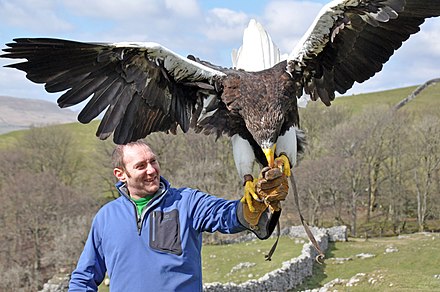Steller’s Sea Eagles, one of the largest and most impressive raptors in the world, have long captivated the attention of birdwatchers and researchers alike. While the question of whether these majestic birds experience emotions is a complex one, there is growing evidence that suggests they may possess a level of emotional complexity that was previously underestimated.
Aggressive Behaviors and Siblicide
One of the most notable behaviors exhibited by Steller’s Sea Eagles is their aggressive nature. These birds are known to engage in fierce territorial disputes and have even been observed to commit siblicide, where the stronger chick in a nest will kill its weaker sibling. While this behavior may seem harsh, it is a survival strategy that ensures the stronger bird’s chances of survival in a resource-limited environment.
Pair Bonding and Territorial Attachment
 Image source: stellers sea eagle
Image source: stellers sea eagle
Despite their aggressive tendencies, Steller’s Sea Eagles have also been observed to form strong pair bonds and return to the same nesting site year after year. This suggests a level of emotional attachment to their territory and mate, which could be interpreted as a form of emotional investment in their environment and social relationships.
The Curious Case of the Roaming Steller’s Sea Eagle
In recent years, a Steller’s Sea Eagle has been observed traveling vast distances, from its native Kamchatka Peninsula in Russia to Alaska, Texas, eastern Canada, New England, and most recently, Newfoundland. This behavior has captivated birdwatchers and biologists, raising questions about the possibility of birds traveling for reasons beyond just necessity or instinct, such as curiosity or even a sense of adventure.
Emotional Complexity in Birds
While the emotional lives of animals, including Steller’s Sea Eagles, are still largely a mystery, the study of animal behavior and cognition has made significant strides in understanding the complexities of animal emotions. Research has shown that some animals, such as elephants and primates, exhibit behaviors associated with grief, joy, and empathy. While birds, in general, are less studied in this regard, there is evidence to suggest that they, too, may have emotional lives that are more complex than we previously thought.
Physical Characteristics and Hunting Behavior
Steller’s Sea Eagles are known for their impressive physical characteristics, with a wingspan of up to 8 feet and striking white markings that distinguish them from their bald eagle cousins. These powerful hunters feed on a variety of fish, mammals, and other birds, often competing with other predators for food.
Conclusion
In conclusion, while it is challenging to definitively determine the emotional lives of animals like Steller’s Sea Eagles, there is evidence to suggest that they may possess a level of emotional complexity that was previously underestimated. The study of animal behavior and cognition continues to shed light on the fascinating world of animal emotions, and the Steller’s Sea Eagle is just one example of the many intriguing species that deserve further exploration.
References:
– Adriana Craciun, “What a Roving Steller’s Sea Eagle May Tell Us About Ourselves,” The Conversation, May 22, 2023, https://theconversation.com/what-a-roving-stellers-sea-eagle-may-tell-us-about-ourselves-185188.
– “Animal Emotions,” National Geographic, accessed April 23, 2024, https://www.nationalgeographic.com/animals/article/animal-emotions.
– “Steller’s Sea Eagle,” Audubon, accessed April 23, 2024, https://www.audubon.org/field-guide/bird/stellers-sea-eagle.

